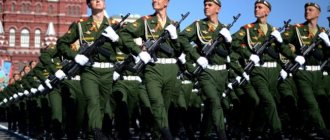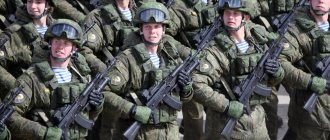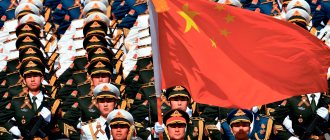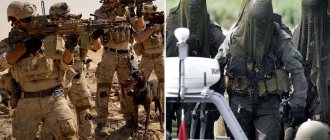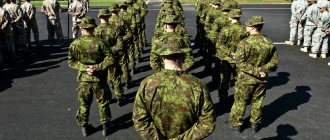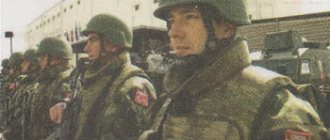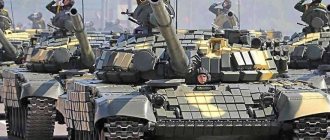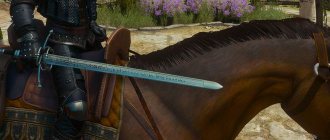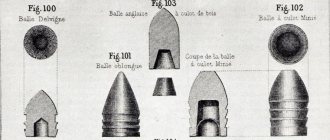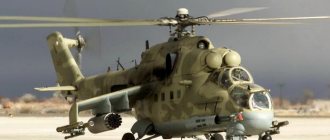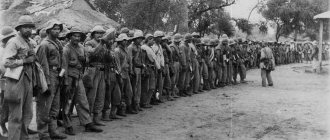| Chilean Army | ||
| Chilean Army insignia. | ||
| Active | Monarchist since January 12, 1603 (418 years) [1] Republican since December 2, 1810 (211 years) [2] | |
| A country | Chile Chile | |
| loyalty | Chile Chile | |
| Frame/s | Chilean Armed Forces | |
| Type | Ground Army | |
| Function | Defense of national territory | |
| Specialization | Ground War | |
| Size | 80 200 [ 3 ] | |
| Part | Chilean Ministry of Defense | |
| Quartering | Entire national territory | |
| equipment | See Attachment | |
| High Command | ||
| Commander-in-Chief of the Army | Army General Ricardo Martinez Menanto (until March 9, 2022) | |
| Appointed Commander-in-Chief of the Army | Major General Javier Iturriaga del Campo (since 9 March 2022) | |
| Chief of the Army General Staff | Major General Ernesto Tejos Mendez (since December 2020) | |
| Famous generals | José Miguel Carrera, Bernardo O'Higgins, José de San Martín, Ramon Freire, Pedro Pablo Dartnell, José Joaquín Prieto, Manuel Bulnes, Justo Arteaga, Basilio Urrutia, Estanislao del Canto, Erasmo Escala, Adolfo Holli, Manuel Baquedano, Cornelio Saavedra, Emilio Sotomayor, Patricio Lynch, Emilio Koerner and Augusto Pinochet | |
| Marks of Excellence | ||
| National Pavilion | ||
| Flag | ||
| Command Flag | ||
| Army Air Corps tail badge | ||
| Culture and history | ||
| Patron/a | Virgo Carmen | |
| Motto | « Always victorious, never defeated » | |
| Colors | Feldgrau Prussian blue white | |
| march | Farewell to the Seventh Line , Yungay's Hymn , Me and My Rifle , Radetzky's March | |
| Hymn | Old banners (official) | |
| A pet | Condor | |
| Anniversaries | June 7: Infantry September 5: Reservist Day September 19: Army Glory | |
| Reward | See Orders, decorations and medals of Chile. | |
| Wars and battles | ||
| ||
| https://www.ejercito.cl | ||
| [edit data in Wikidata] | ||
Chilean Army
- a unit of the Chilean armed forces responsible for the land defense of Chile, whose task is to maintain the external security, sovereignty and territorial integrity of the Republic. It forms, together with the Navy and Air Force, the Chilean Armed Forces.
In recent years and following several important re-equipment programs and their military funding (2.1% of GDP was allocated to the country's military in 2012, according to the CIA), [4] the Chilean army has emerged as one of America's most technologically advanced and professional armies . [ 5 ]
Functions
Main article: Chilean Armed Forces
The Chilean Army is an institution that is part of the armed forces according to the provisions of the Political Constitution of Chile, in Chapter XI "Armed Forces, Public Order and Security" in Articles 101-105. Article 101 states that "Armed Forces The forces under the Ministry of National Defense shall consist exclusively of the Army, Navy and Air Force. They exist to protect the Motherland and are necessary for national security.” Likewise, the Basic Charter defines their character as obedient and non-discriminatory, professional, hierarchical and disciplined.
Currently it must satisfy the requirements set by the State of Chile through mission areas
, which represent a new defense planning methodology that takes into account the different areas of the national defense mission in which military institutions carry out assigned tasks that can and must be carried out in accordance with what is stated in the
Chilean National Defense Book of 2017
, they include ( but not limited to):
- Protection
- National emergency and civil protection
- The international cooperation
- Contribution to national development and government action
- Security and territorial interests
In addition to these, the Army also performs many other tasks in the areas of social responsibility, security and engineering, among others, in support of the society they serve (Antarctic presence and sovereignty in isolated areas, support in border control, equine therapy, social operations for people and animals in isolated places, control and security of election processes, cyber protection, etc.).
Marin (Armada de Chile)
Logo of the Armada de Chile
Admiral Edmundo Gonzalez
leads a 22,000-strong navy (including 4,500 people). Marines).[5]
Warships
The fleet consists of 29 ships, of which the eight frigates listed below are dedicated to larger missions. They are at home in Valparaiso and form together with the fuel tanker Almirante Mont
(AO-52) Henry J. Kaiser Class at
Escuadra Nacional
. There are also several marine amphibians in Valparaiso. The fleet also has four submarines stationed in Talcahuano. Two of them are the most modern copies of the Scorpen class, the other two are Class 209 boats. Among the remaining floating units there are several Iquique resident missile fast boats of the 148 class that were adopted from the German fleet. More from India The adopted S-boats are located in Punta Arenas house.
| Armada de Chile (badge) |
Frigates of the Chilean Navy
- Adelaide class: frigate Almirante Latorre
(FFG-14), (ex
HMAS Melbourne
) - frigate Captain Pratt
(FFG-11), (formerly
HMAS Newcastle
)
- frigate Almirante Blanco Encalada
(FF-15), (ex HNLMS
Abraham van der Hulst
)
(FFG-18), (formerly HNLMS
Tjerk Hiddes
)
- frigate Almirante Williams
(FF-19), (formerly HMS
Sheffield
)
-Big:
- frigate Almirante Lynch
(FF-07), (formerly HMS
Grafton
)
(FF-05), (ex HMS
Norfolk
)
(FF-06), (ex HMS
Marlborough
)
other ships (selection)
- Foudre class: Landing dock ship Sargento Aldea
(LSDH-91), (formerly TCD
Foudre
)
- Landing ship (Tank landing ship) Rancagua
(LST-92)
(LST-95)
- frigate Almirante Latorre
(FFG-14)
- destroyer Almirante Riveros
(FFG-18)
- Three frigates Duke
-Class (FF-05 to FF-07)
- Tanker Almirante Mont
(AO-52) and frigate
Almirante Riveros
(FFG-18) - Dock landing ship Foudre
, Today:
Sargento Aldea
(LSDH-91) - landing ship Rancagua
(LST-92)
- Submarine CS Simpson (SS-21)
- Naval helicopter Sh-32 Super Puma
- Submarine Scorpene class Valparaiso area
Naval shipyard
Armada de Chile has a shipyard with three bases, Astilleros y Maestranzas de la Armada - ASMAR
Naval aviators
c Naval aviators currently (as of late 2022) own the following aircraft:[9]
- Maritime patrol and patrol aircraft 2× P-3ACH Orion (1 to be retired after the arrival of the P-295, two aircraft were completely refurbished from 2022 for use until 2037)[10]
- 3× CASA C-295
- 4× Embraer EMB 110
- 7× Partenavia p.68
- 7× AS532
- 7× Pilatus PC-7, Advanced Trainer
Story
See also: History of Chile
Pre-Columbian period
Patricia Arancibia dates the first mention of the existence of an army on Chilean territory to the resistance to the Inca invasion in the last third of the 15th century. First the Inca Tupac Yupanqui occupied even the Maule River, and then his son Huayna Capac tried to expand to the Biobio River, but in 1520 he had to return to the Maule, where the border was fortified, before the arrival of the Spaniards. [6]: 17
Colonial period
See also: Colonial Chile
The colony was the periodic struggle between Spanish and Araucanian conquerors that characterized the workings of the new country. This, and its strategic position as an entry point into the Pacific Ocean, which made it a potential target for other colonial powers, prompted the King of Spain to issue orders on March 21, 1600, to help defend the colony in Chile with money from the Viceroyalty of Peru, with the so-called Real Location. On January 22, 1604, in Concepción, by order of Philip III of Spain, an army was created under the command of Alonso de Ribera, which was supposed to defend the king's possessions. [6]: 31
Latin American independence
Main article: Independence of Chile
He made his debut in 1811 against the Spanish Empire in the Viceroyalty of the Rio de la Plata, in present-day Argentina, forming the Chilean Auxiliary Expedition to make the United Provinces of the Rio de la Plata independent. At the beginning of the independence movement, which effectively proclaimed the independence of Chile, the army of the Colony did not undergo changes. It should be borne in mind that the peoples of Spain had a tradition of creating government colleges in cases where the king could not exercise his power. It was only after the Figueroa rebellion and the seizure of power by José Miguel Carrera that, based on the Army of the Captaincy General of Chile, the First National Government Council of Chile, the first National Army was created on December 5, 1810, actively participating in the War of Independence, in which it fought against the troops royalists in battles such as Yerbas Buenas, San Carlos, Quechereguas, Rancagua, Chacabuco and Maipú.
Constitutional probation
After the battles of Chacabuco and Maipú, which resulted in the founding of an independent Chile, the country plunged into a phase of searching for the best form of government, where different ideals were considered and tested: federalists, some thought about a monarchy, others adhered to a liberal constitution to the extreme. . Despite the fatigue this meant, the country was able to organize, finance and recruit the First National Command, the Liberation Expedition of Peru, subdue the royalists in southern Chile, and expel the last Spanish strongholds during the capture of Valdivia. Conquest of Chiloe.
Conservative Republic
Chilean officers of the mobilized Victoria Battalion during the Pacific War.
Triumph of the Pelucons
(Conservatives) at the Battle of Lyrcus marked the beginning of the Conservative Republic, which brought profound changes to the army in accordance with the progress of society, economics and technology. One of the first goals of Diego Portales, the forerunner of the strong state, was to put an end to the leadership of army commanders who regularly rebelled for political or monetary reasons. To prevent this, Portales expelled liberal officers from the army, downsized the plant, and reorganized the National Guard. Already during the Quillot uprising, this paramilitary institution, parallel to the army, managed to repel insubordination.
During the Portal Republic, the army participated in the war against the Peru-Bolivian Confederation, the 1851 revolution, the 1859 revolution and the occupation of Araucanía. The General Decree of the Chilean Army (1839) was also issued.
Either because of the military prestige created by the stunning Napoleonic victories up to 1812, or because of the effectiveness demonstrated by the French army during the subsequent Crimean War, the Chilean army, like most armies of the Western world in the second quarter of the 19th century, it follows the French organization, traditions, customs and clothing of the period of Napoleon III. Note the similarities between the uniforms of the Chilean, Peruvian and Bolivian armies in the Pacific War. There are also similarities between them and the uniforms used during the American Civil War. The defeat of France in the Franco-Prussian War would finally put an end to this influence in the Chilean army.
Pacific War
Main articles: Chilean Army during the War of the Pacific
and
Appendix: The Chilean Army during the Pacific War
.
The War of the Pacific was an almost seminal event and changed the perception of the army in Chilean society and abroad. The officers understood that a new professional orientation was needed to help correct the shortcomings that, despite the victory, the war had highlighted: at the beginning of the war it was necessary to improvise the services of Administration, Health Care, and Transport. Engineers. During the war there was no professional veterinary service.
To modernize the army, the government of Domingo Santa Maria hired several Prussian officers who were supposed to improve education, regulations and the functioning of the institution. During this process of modernization, officer training was professionalized through the modernization of the educational content of the War College, the creation of the Military Academy (the first in America and the fourth oldest academy of its kind in the world, preceded by those of the United Kingdom (1799), Prussia (1826) and France (1876), during this period the Military Geographical Institute was created, and universal conscription was established.
During this period, Emilio Körner arrived in Chile, and some traditions and uniforms were adopted, such as the Stahlhelm and Pickelhaube. The warlike appearance achieved through Prussian influence made an impression abroad and, for example, prompted Spain's minister plenipotentiary in Argentina, Julio de Arellano, to write to his government: ... Chile ... where patriotic enthusiasm is unanimous and where it has succeeded in forming an army which German officers proclaim to be comparable in organization and qualities with the best in Europe
. [ 7 ]
Civil War 1891
Main article: Civil War of 1891
The Civil War of 1891 led to the division of the army and the creation of a new army in Iquique, whose high command finally took charge of the army after the defeat of Balmacedista's forces.
Twentieth century
Conscripts burn books in Santiago during the 1973 coup in Chile.
Between 1906 and 1913, the reorganization work was consolidated, taking into account all aspects related to the War Ministry and the various branches of the Establishment, such as the General Inspectorate, the General Staff, the Logistic Services and the divisions, brigades and regiments throughout the country. Also on February 7, 1913, the Military Aviation School, the first in America (and the fourth oldest in the world), was created.
In turn, as part of the concert in Central and South America, the prestige of the Chilean army prompted several countries, including Ecuador, El Salvador, Venezuela and Colombia, to request military missions to cooperate in the reorganization of their armies. In the first decades of the century, the Military Geographical Institute, the Main Directorate of Maestranza and the Artillery Park, now the RLE "Military Arsenal" and FAMAE, the oldest (operating) production of its kind in America, the Polytechnic Academy, were reorganized. Military _
In 1920, the specter of war, Don Ladislao's War, was used for political gain by exposing the abuse of the institution for personal gain. During the 1920s, the country's social, economic and political situation manifested itself in a series of crises in which army officers were the main protagonists. In 1924, Ruido de Sables (Chile) occurred, which foreshadowed the Chilean coup d'état of 1924 and the Chilean coup of 1925, the latter transferring power to Arturo Alessandri on 20 March of that year.
In 1927, the Carabinieri of Chile were created partly with the participation of the armed forces; In 1930, the Chilean Air Force was created, thus combining army and naval aviation, and in 1931 the permanent position of Commander-in-Chief of the Chilean Army was created. Previously, this position existed only in case of war, since in peacetime there was an inspector general of the army who did not command troops and had only inspection powers.
In 1932, the Republican Militia was created to prevent the adventures of inept military leaders, but with command of troops in moments of power vacuum from taking over the government, as in the case of the Socialist Republic of Chile. The militia was disbanded in 1936.
Between the 1940s and 1950s events occurred that continued the line of modernization adopted by the High Command. Among them we find the structuring of armored weapons in 1944, telecommunications weapons in 1947, the mining school, the organization of the Chilean Civil Defense by the Army General Staff, the creation of General Bernardo O'Base Higgins. Military superiority was also responsible for giving a new structure to the army services. During this period, the service of military equipment acquired particular importance as a result of the technical evolution of weapons and the creation of new combat elements, which entailed strategic and tactical modifications.[ citation needed
]
Throughout the century, the army intervened in politics, such as the Pig's Legs Plot (1948), Taknazo in 1969, Tanquetazo in 1973, until it ended with the September 11, 1973 coup d'état of General Augusto Pinochet. , starting a military dictatorship that ruled the country continuously for 17 years, relying mainly on the support of the military, caused a deep division in the country, marked by systematic violations of human rights. [ 8 ]
After democracy was restored, several cases of corruption in the Army were discovered, collectively called Milicogate.
Notable commanders[edit]
- Bernardo O'Higgins - revolutionary, national hero of the Republic of Chile, leader of the struggle for independence of the Spanish colonies in South America, Grand Marshal of Peru (1828).
- Jose Miguel Carrera is a South American political and military figure, revolutionary, and leader of the struggle for the independence of the Spanish colonies in South America. General, national hero of the Republic of Chile. Chairman of the First Chilean Council of Governors in 1811 - 1814 (revolutionary government junta).
- Jose de San Martin - one of the leaders of the War of Independence of the Spanish colonies in Latin America 1810 - 1826, a national hero of Argentina. He headed the first government of Peru.
- Manuel Bulnes is a Chilean military and political figure, President of Chile. Participated in the war of independence from Spain.
- Manuel Baquedano - military and statesman, President of Chile.
- Carlos Ibáñez del Campo - military and statesman, President of Chile.
- Augusto Pinochet (August 23, 1973 - March 11, 1998) was a statesman and military leader, captain general and Commander-in-Chief of the Chilean ground forces. Came to power as a result of a military coup in 1973 that overthrew the socialist government of President Salvador Allende.
Modernization plans
The Chilean Army has been involved in a modernization program that has transformed it from a territorial army in the past to a mobile and compact army in the present. These changes began with the Alcazar Plan,
introduced in 1992.
The long-term plan consists of:
- Creation of flexible units in the north and south of the country, capable of reacting autonomously in case of isolation from the center. Creation of highly mobile forces in the center, which could simultaneously provide support in the north or south. [ 9 ]
- "Rationalize" the organization to have complete divisions and thus reduce dependence on mobilization, which in turn reduces reaction time. [ 10 ] : 11
- Among its immediate goals is the professionalization of all its members, and it strives to offer potential soldiers an attractive professional career that makes compulsory military service unnecessary.
- The inclusion of modern equipment in accordance with North Atlantic Treaty Organization standards to ensure greater compatibility with other friendly armies, an understanding of globalization and the inclusion of Chile in the world as a task in which the army plays a fundamental and strategic role accompanying the country's public policy. [ 10 ] : 11
Currently there is a Strategic Development Plan “Army 2026”
, which, through rationalization and acquisition of new functions and capabilities, should prepare the army in accordance with the challenges of the future growth of the country.
Part of this plan is the ORCA Action Plan 2015–2018
, which will reorganize certain divisions. [ eleven ]
“...We will build a new world”
The Chileans were incredibly lucky with Koerner. He was a hereditary military man, studied brilliantly at the Imperial Military Academy (where he later taught artillery) and also managed to distinguish himself by sniffing real gunpowder: he was wounded in the battle of Sedan, and in 1870 his battery was the first to fire a salvo at Paris.
Emil Körner (center)
As part of his subsequent advanced training, Emil Bernhard Körner traveled halfway around the world, including Russia, Spain, Italy and Morocco. When the Chilean envoy Guillermo Matta traded him from the Germans in 1885, Körner was 37.
Our hero began to study Spanish, with the pedantry characteristic of the Germans, as soon as he boarded the ship.
On the same topic: Educational program: what is the Second Reich
When Koerner arrived at his destination and saw how neglected everything was, he was puzzled, but did not give up. To begin with, I replaced the old curriculum of the Military School in Santiago with a new one, modeled on what existed in the Berlin Cadet Corps. Now infantry officers, cavalrymen and artillerymen trained for different numbers of years. Special courses on tactical combination of weapons, ballistics, construction of fortifications, geodesy and cartography were strengthened. In addition, physics and chemistry were added to the program for senior cadets. The program now included higher mathematics and world history as electives.
Körner canceled his fencing lessons. Instead, the cadets practiced hand-to-hand combat skills, fired live ammunition and pushed guns over rough terrain. In addition, the German managed to convince the Chilean government of the need to establish a Higher Military Academy for the most talented graduates. It was founded on July 12, 1887 and became the Latin American version of the Prussian Military Academy (Kriegsakademie).
The educational texts were translated German textbooks. They also required entrance exams (and no more than 5% of applicants were admitted). Higher mathematics especially gave Chileans a lot of trouble...
At the same time, in 1886, a Military Circle was formed - something like a club of interests, where military personnel were taught to use new rifles. A little later, the same School of Junior Officers, over which the civil war subsequently broke out, accepted its first cadets.
Chilean soldiers
Well, after his enchanting debut as a progressive commander, Koerner received enough power to abolish the notorious National Guard and promote the law on compulsory military service, which was adopted in 1900. Together with him, the idea of necessary social guarantees for military personnel was promoted. In addition, the army took upon itself the responsibility of teaching soldiers literacy and giving them additional professional skills. By 1919, 90% of young people who had completed military service could read and write.
Army organization
Main article: Appendix: Organization of the Chilean Army
To carry out the administrative, legal and financial tasks established by law, the Commander-in-Chief of the Army consults with the secretariats that directly serve him.
To study, plan and carry out tasks, the General Staff of the Ground Forces has ten departments of specialists involved in the preparation of relevant tasks. One of them is the Ground Operations Command, which is responsible for managing military units throughout the country.
Lebanon
And this is what the valiant canine soldiers from the K7 division look like with their four-legged subordinates. Trained Lebanese dogs will tear apart anyone who gets in their way. And if no one stands up, then out of sadness and lack of demand they will tear apart their own masters. Therefore, even at the military parade in Beirut, all instructors are dressed in special anti-dog suits. It's funny, but it's safe.
Military material
Main article: Appendix: Chilean Army War Materials
See also: Chilean Army Aviation Brigade
and
the Copper Reserve Act
.
To achieve its deterrence mission, the Army must maintain and update its military capabilities in accordance with the risk projections on which its mission is based. [ 10 ]: 6 Existing technology sometimes entails the need to change the doctrine and organization of the Armed Forces. In turn, political and budgetary conditions determine not only the purchase of material, but also its distribution throughout the territory. Finally, material obsolescence can be due to logistical reasons (when the material reaches its programmed life cycle, such as food rations that have expired), tactical obsolescence (equipment no longer interoperates with the weapon system of which it is part). some, for example, equipment that is too slow in the context of a modern conflict) and technical obsolescence (equipment breaks down and it is not technically or economically profitable to restore it, for example, cars with gasoline engines).
It is necessary to ensure that these three decommissioning dates coincide as closely as possible, and to achieve this, material renewal projects must be developed as integrated weapon systems. [10]: 7
Notes[edit]
- João Resende-Santos in Neorealism, States and the Modern Mass Army
(pp. 3, 9-10) uses the broader term "imitation" instead of "Prussification". He says: “International competition occurs in a variety of fields and on the part of an equal number of state and non-state actors... Combat in all forms, on the part of firms or states, whether in the economic or military fields, is driven by the same competitive pressures and is based on same political criteria"
Military Labor Corps, prevention and assistance to victims
See also: ONEMI
and
Chilean Civil Defense
.
An army instrumental band performs songs in Talcahuano to ease the problems of the population after the 2010 Chile earthquake.
The logistics capacity and its personnel also perform an important mission during preventive and relief measures during natural disasters in Chile. Preventive evacuation from areas threatened by volcanic eruptions or floods, maintaining order in cities affected by earthquakes, replacing collapsed bridges, clearing roads, etc. [12]
Following the February 2010 earthquake, there were coordination gaps between government agencies. [note 1]
Armor
| Quantity | Type | Source | Notes | Photo |
| Tanks | ||||
| 170+ | Germany | 120 mm gun. May be updated to 2A5CHL in the near future. | ||
| 100 | Leopard 1B | Germany Netherlands | 105 mm gun | |
| Infantry fighting vehicles | ||||
| 280 | Marder 1A3 | Germany | ||
| 139 | AIFV-B/YPR-765 | Belgium Netherlands | Some of them are equipped with Spike LR missiles. | |
| Armored personnel carriers | ||||
| 369 | M113A1/A2 | United States | ||
| 275 | MOWAG Piranha | Switzerland Chile | Built under license by FAMAE in Chile, in various configurations. 250 6x6 and 25 8x8. | |
| Armored wheeled vehicles | ||||
| 500+ | HMMWV | United States | ||
| 180 | Land Rover Defender | United Kingdom | ||
| 400+ | AIL Storm | Israel | ||
| 230 | Toqui A-2 | Chile | ||
| Artillery | ||||
| 8 | LAR-160 | Israel | ||
| 14 | RAYO FAMAE | Chile | ||
| 8 | SLM FAMAE | Chile | ||
| 24 | M109A5 | United States | 24 requests in 2011, 12 delivered in 2012 and another 12 in 2015 | |
| 24 | M109 KAWEST | USA Switzerland | Purchased in 2004 | |
| 36 | Soltam M-71 | Israel | Purchased in 1982 | |
| 74 | Howitzer M101 | United States | ||
| 54 | OTO Melara Mod 56 | Italy |
Training and hierarchical degrees
Officers
Main article: Chilean Army officer insignia
See also: Military rank of Chile
The military ranks of the Chilean Army are similar to those of the German Army. The rank of General of the Army corresponds to the Commander-in-Chief of the Army and can only be awarded to an officer appointed by the President of the Republic. Until 1998, there was the rank of Captain General, which is the highest rank in the General Corps and was last used by Augusto Pinochet Ugarte for the exercise of government of the country.
| Range [14] | General | senior officer | Chief officer | Chief officer | Junior officer | Junior officer | Junior officer | Junior officer | ||
| Release from hold | ||||||||||
| Office outfit | ||||||||||
| South Central Tenida | ||||||||||
| North Tenida | ||||||||||
| Degree | army General | major general | Brigadier General | Colonel | lieutenant colonel_ | Mayor | Captain | Lieutenant | Second Lieutenant | ensign |
| Reduction | WHERE | GDD | GBD | CRL | TKL | MAY | LID | TTE | YOU | Alf |
| Career years | [note 2] | [note 3] | [note 4] | 26-30 [note 5] | 21-25 | 16-20 | 10-15 [note 6] | 5 at 9 | 2-4 | 1 |
| NATO code | OF-9 | OF-8 | OF-7 | OF-5 | OF-4 | OF-3 | OF-2 | OF-1 | OF-1 | OF-D |
sergeants and classes
The permanent cadre is trained at the Sergeant Daniel Rebolledo Sepulveda Non-Commissioned Officer School, and its officers at the Bernardo O'Higgins Liberator Military School. In addition, there is a large contingent of civilian personnel responsible for administrative tasks, military justice and commissariat.
| Classify | Chief Petty Officer | non-commissioned officer | Class | ||||
| Release from hold | |||||||
| Office outfit | |||||||
| South Central Tenida | |||||||
| North Tenida | |||||||
| Degree | Chief Warrant Officer | non-commissioned officer | Sergeant 1st | Sergeant 2nd | Corporal 1st | 2nd Corporal | cape |
| Reduction | AS | MTR | SG1 | SG2 | CB1 | KB2 | CBO |
| NATO code | OR-9 | OR-8 | OR-7 | OR-6 | OR-5 | OR-4 | OR-3 |
Carrera
| Years of study | Non-commissioned officer rank | Non-commissioned officer rank | Years of study | Official degree | Official rank |
| 1 year | Dragonborn Soldier | Student | 1st - 2nd - 3rd year | cadet | cadet |
| 2nd year | Dragon Cloak | Student | 4th year | subordinate | cadet |
| Years as a non-commissioned officer | Non-commissioned officer rank | Non-commissioned officer rank | Officer years | Official degree | Official rank |
| 1st - 5th year | Soldier | Professional squad | |||
| 1st - 3rd year | cape | Class | 1 year | ensign | Junior |
| 4-9 years | 2nd Corporal | Class | 2nd - 5th year | Second Lieutenant | Junior |
| 10th - 15th year | Corporal 1st | Class | 6th - 9th year | Lieutenant | Junior |
| 16th - 20th year | Sergeant 2nd | Class | 10th - 15th year | Captain [note 7] | Junior |
| 21–25 years | Sergeant 1st | non-commissioned officer | 16th - 20th year | Mayor | Main |
| 26th - 30th year | Petty Officer [note 8] | non-commissioned officer | 21–25 years | Lieutenant Colonel | Main |
| 30th - 35th year | Chief Petty Officer | Chief Petty Officer | 26th - 30th year | Colonel [note 9] | Management |
| 31st - 32nd year | Brigadier General [note 4] | General | |||
| Major General [note 3] | General | ||||
| General of the Army [note 2] | commander in chief |
Airplane
| Quantity | Airplane | Source | Service versions |
| Fixed wing | |||
| 2 | S-212 Aviocar | Spain | S-212-300 Aviokar |
| 3 | CN-235 | Spain | CN-235 M-100 |
| 3 | Cessna 208 Motorhome | United States | Cessna 208B Grand Caravan |
| 1 | Cessna 680 Citation Sovereign | United States | Cessna 680 Citation Sovereign |
| Helicopters | |||
| 2 for sale | Aerospatiale SA 330 Puma | France | Aerospatiale SA-330L Puma |
| 10 | Eurocopter AS532 Cougar | France | Eurocopter 8 AS-532AL Mk-1 Cougar + 2 AS-532ALe Mk-II |
| 4 | Eurocopter AS350 | France | Eurocopter AS-350B3 Ecureuil |
| 2 | Eurocopter AS355 | France | Eurocopter AS-355N Ecureuil 2 |
| 9 | McDonnell Douglas MD 500 Defender | United States | McDonnell Douglas MDD-369FF Defender |
| Unmanned aerial vehicles | |||
| 6+ | BlueBird SpyLite | Israel |
References
- "Political history of the Sociedad Jiennenses, Alonso de Ribera". www.jean.es._
_ 2015. - “History of Chile: Other articles. What is celebrated on National Holidays? ". www.biografiadechile.cl
. 2016. Retrieved June 2, 2022. - "Commander in Chief: Conference" (undefined). www.ejercito.cl
. Retrieved June 2, 2022. - "Country Comparison: Military Spending". CIA
. _ 2016. Retrieved June 2, 2022. - "Collection of regional studies". Library
of Congress. Retrieved June 2, 2022. - ↑ a b
Arancibia Clavel, 2007 - Pedro Santos Martinez, Diplomatic Documents on the History of Argentina, 1850–1954, Volume V: 1890–1909. Center for Historical Studies and Research "Cuyo", Mendoza, 2002, ISBN 987-43-1155-X, p. 124, document no.: 368
- Consolidated report. National Commission on Political Prisons and Torture, pp. 11-12. . Archived from the original on July 27, 2007.
- Reorganization of the army and new design of the armed forces
- ↑ a b c d
Mario Puig, Military Modernization Processes in Chile, supported at arcive.org December 30, 2022. - The Chilean Army is reorganizing its units to enhance interoperability.
- Chilean Army website, Tsunami Warning Preventive Measures, retrieved December 30, 2022.
- Susana Frias and Alfredo Peña in Cambio21, 27/F 2010: the day of the earthquake when the armed forces turned their backs on Bachelet, confirmed by the Internet Archive [1]
- Chilean army. "Degree Signs". Archived from the original on January 20, 2012. Retrieved May 15, 2014
Ratings
- The institution was criticized for its Torrente
not cooperating with the flow of information between Santiago and the affected regions. [ 13 ] - ↑ a b
Reachable only by officers of the infantry, artillery, armored cavalry, engineers and telecommunications (DFL-1, Chile, "CHARTER OF PERSONAL EMPLOYEES OF THE ARMED FORCES", article 5º. Number I letter A) and who have been appointed by the President of the Republic as Commander-in-Chief of the Army in in accordance with the Constitution. - ↑ a b
Achievable only for echelon officers or weapons specialists such as infantry, artillery, armored cavalry, engineers and telecommunications (DFL-1, Chile, "CHARTER OF PERSONAL EMPLOYEE OF THE ARMED FORCES", article 5º. Number I, letter A). - ↑ a b
Maximum attainable rank for military officers. Material ranks or specialties, Intendance (DFL-1, Chile, "CHARTER OF PERSONAL EMPLOYEES OF THE ARMED FORCES", article 5º. Number I, letters B and C), Justice and Health (DFL-1, Chile). , “CHARTER OF PERSONAL EMPLOYEES OF THE ARMED FORCES” Article 5º.. Number II letter C and D). - Maximum attainable rank for officers of the female military ladder (DFL-1, Chile, "CHARTER OF PERSONAL EMPLOYEE OF THE ARMED FORCES", article 5º. Number I letter D), transportation, general assistant, dental and veterinary health, religious service (DFL-1, Chile , “CHARTER ON PERSONAL EMPLOYEES OF THE ARMED FORCES”, Article 5º, number II, letters A, B, E, F and G respectively). This is also the maximum level for officers not appointed as a general by the President of the Republic. It corresponds to the degree of completion of a traditional military career.
- Degree of initiation of officers of justice, health, dental and veterinary services. Justice and Health officers must remain 5 years at the rank of captain, 7 years at the rank of major, 6 years at the rank of lieutenant colonel, and 5 years at the rank of colonel. For their part, dentists and veterinarians must remain 7 years in the rank of captain, 9 years in the rank of major and 7 years in the rank of lieutenant colonel.
- Degree of initiation of officers of justice, health, dental and veterinary services. Justice and Health officers must remain 5 years at the rank of captain, 7 years at the rank of major, 6 years at the rank of lieutenant colonel, and 5 years at the rank of colonel. For their part, dentists and veterinarians must remain 7 years in the rank of captain, 9 years in the rank of major and 7 years in the rank of lieutenant colonel.
- The maximum attainable rank for sergeants in the General Services specialty.
- Maximum attainable rank for officers of the female military ladder (DFL-1, Chile, "CHARTER OF PERSONAL EMPLOYEE OF THE ARMED FORCES", article 5º. Number I letter D), Transport, Chief Assistant, Dental and Veterinary Health, Religious Service (DFL-1, Chile , “CHARTER ON PERSONAL EMPLOYEES OF THE ARMED FORCES”, Article 5º, number II, letters A, B, E, F and G respectively). This is also the maximum level for officers who are not appointed generals by the President of the Republic. It corresponds to the degree of completion of a traditional military career.
Bibliography
- Arancibia S., Patricia; Balart Paes, Francisco; Bram Garcia, Enrique; San Francisco, Alejandro (2007). Army of the Chileans 1540-1920. Santiago de Chile: American Library. Retrieved May 1, 2017.
- Maldonado, Carlos (2005). The Chilean Army in the 19th Century, the Historical Genesis of the Heroic Ideal, 1810-1885
. Miguel Enriquez Training Center. pp. 1-98. - Reino Gutierrez, Manuel; Gonzalez Salinas, Edmundo; Haise Gonzalez, Julio (1981). History of the Chilean Army. The Army and the Organization of the Republic (1817-1840) III
. Army General Staff. - Reino Gutierrez, Manuel; Gomez Ehrmann, Sergio; Guerrero Joaham, Christian (1985). History of the Chilean Army. The Army in the Pacific War, the Occupation of Antofagasta and the Tarapacá V
. Army General Staff. - Reino Gutierrez, Manuel; Gomez Ehrmann, Sergio; Gonzalez Salinas, Edmundo (1985). History of the Chilean Army. The Army in the Pacific War, the Moquegua, Tacna and Arica Campaigns, Lima, the Mountains, Arequipa and the End of the War. VI
. Army General Staff. - Reino Gutierrez, Manuel; Sepuveda Rojas, Arturo; Silva Galdames, Osvaldo; Rojas Valdez, Ximena; Chacon Gutierrez, Isabel (1983?). History of the Chilean Army. Army reorganization and German influence (1885-1914). VII
. Army General Staff. - Reino Gutierrez, Manuel; Sepuveda Rojas, Arturo; Gonzalez Salinas, Edmundo (1983). History of the Chilean Army. The First World War and its impact on the army (1914-1940). VIII
. Army General Staff. - Barros Arana, Diego (1881a). History of the War in the Pacific (1879–1880) 1
. Santiago, Chile: Librería Central de Servat i C a .
external reference
- Wikimedia Commons contains a multimedia category about the Chilean Army
. - Chilean Army on Twitter
- Chilean Army on Instagram
- Chilean Army on Flickr
- Chilean Army on YouTube
- Chilean Army on Facebook
- Liberator Bernardo O'Higgins Military School
- Chilean Army Non-Commissioned Officer School
- military Academy
- Military Polytechnic Academy
- Historical and Military Museum of Chile
- Historical and Armory Museum of Morro de Arica
- British Pathé - Video of the Chilean Army in 1925
| Control of authorities |
|
- Data: Q2745472
- Multimedia: Chilean Army
